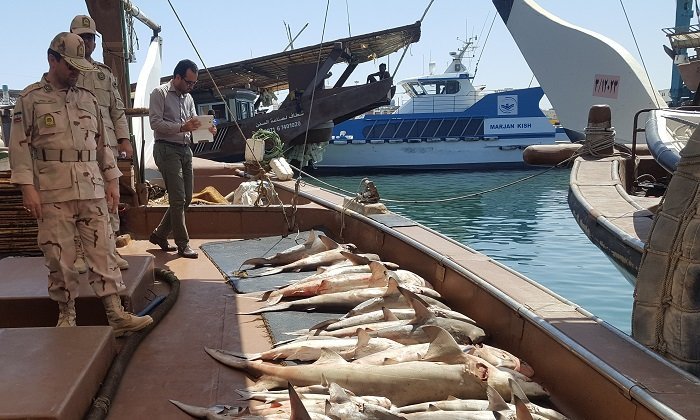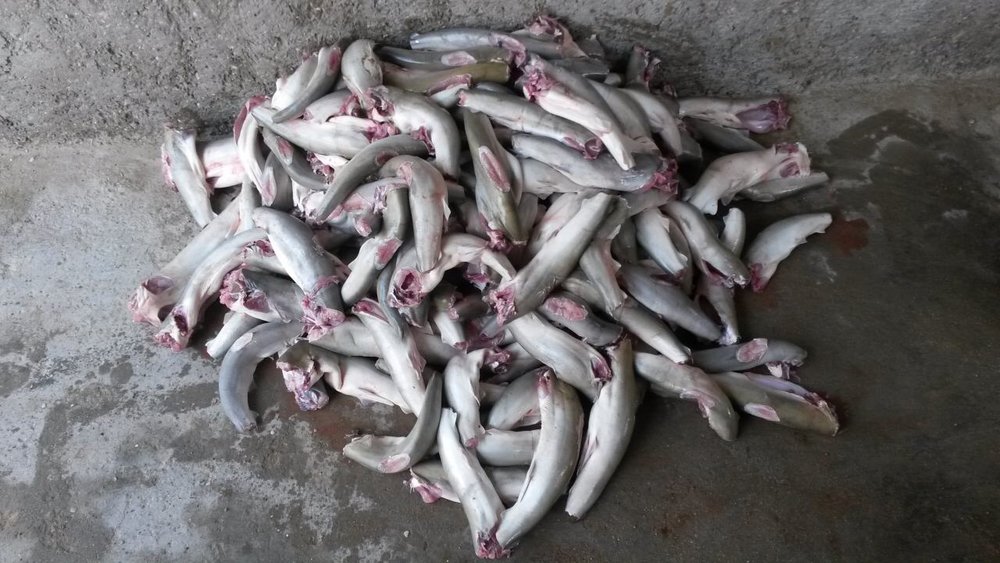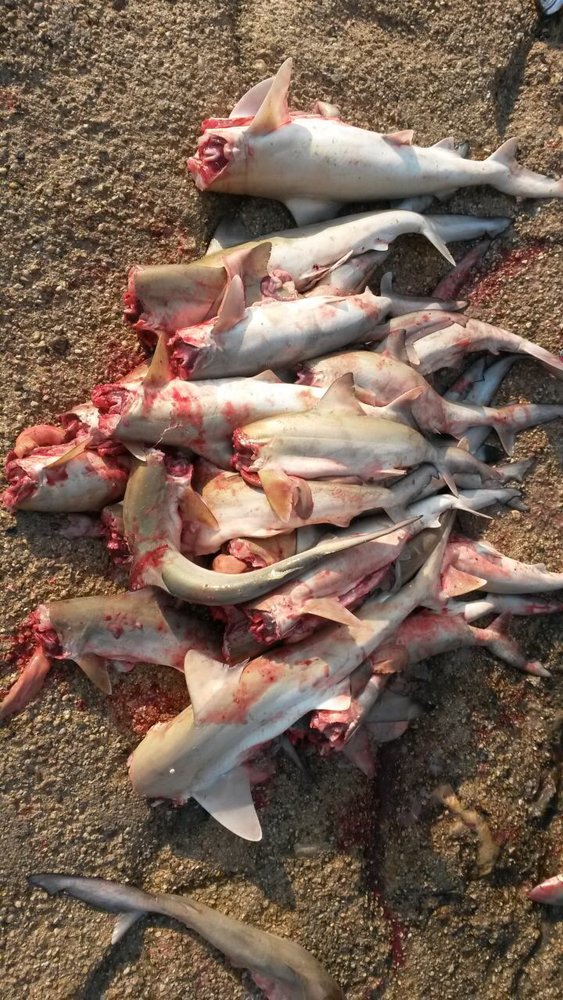Data collection, bycatch reduction, halting illegal fishing slow sharks decline

The demand for shark products, including meat and fins, is increasing in Asia. Hammerhead sharks and the sharks from the Carcharhinidae family that have ‘black fins’ are susceptible for this kind of exploition in Asia.
Dr. Rima Jabado, a marine biologist, came to the UAE on vacation and she has now been in this region for almost 10 years. In fact, she channeled her childhood passion for marine wildlife into a conservation career. During the past decade, she has probably accomplished more on behalf of Persian Gulf' sharks than anyone can ever imagined.
Investigations from many countries in Persian Gulf showed that fish stock is depleting and have reached worrisome levels. The Tehran Times had an interview with Dr. Rima Jabado who carried the first long-term research project, the Gulf Elasmo Project, on sharks and rays in the region.
Below is the text of the interview.
Q: According to IRNA news agency published on September 23 Iranian police force found about 45 blacktip sharks (Carcharhinus limbatus) and also lemon shark (Negaprion acutidens) onboard a foreign ship. Crew members (7 foreigners) were sentenced to jail and fined 300 million rials ($7,500) for catching each individual of blacktip shark. What is your opinion about this kind of illegal catching? What impact does the illegal trade have on Persian Gulf Reserves?
A: Illegal fishing is a very serious issue that drives overfishing and is particularly harmful to many species, especially threatened ones. In the [Persian] Gulf, many populations of species are already overfished with little regulations in place to protect them. If this is exacerbated by illegal fishing, the situation is likely to become worse very quickly, which is unsustainable.
Q: Would you please tell me about the conservation status of blacktip sharks (Carcharhinus limbatus) and also lemon shark (Negaprion acutidens) in Persian Gulf?
A: Blacktip sharks are some of the most common species that are landed in the [Persian] Gulf. They are considered vulnerable and their numbers have declined by at least 30-50% in the past 40 years. In the broader region, studies indicate that their stocks have collapsed off (for example in India). The lemon shark is in a worse situation and is considered Endangered with population numbers having declined by more than 50% in the past 50 years. This species depends a lot on coral reef habitats as well and these have also declined over the years due to habitat destruction and degradation.
Q: As a member of International Union for Conservation of Nature (IUCN) shark specialist group, what is your assessment about the most important threats to 184 species of sharks, rays, and chimaeras in Persian Gulf waters?
A: The IUCN Red List Assessment that was undertaken in the region evaluated 153 species in total and determined that the largest threat to them in the region is fishing, particularly the impact of bycatch. For example, even if many species are not targeted, they get caught in fishing gear targeting other species, like shrimp trawling which has a high level of bycatch of sharks and rays. Illegal fishing is of course another major threat.

Photo by Hamed Moshiri
Q: Can you please expian the process of Red Listing in this region?
A: We held a workshop that brought together scientists and fisheries experts from across the region. We reviewed previous information that has already been published but we also sourced unpublished data on fisheries catches. The most important information included species-specific data series of catches from each country. This allowed us to determine which species had declined and how big the decline was over a certain number of years. Based on this information, we used the guidelines for Red List assessments from the IUCN and determined what the status of each species was.
Q: And, which susceptible species are closing in on extinction?
A: For species that occur in the Gulf, the sharks that were most threatened included two species hammerheads (Great Hammerhead, Sphyrna mokarran, and Scalloped Hammerhead, Sphyrna lewini), and the Sand Tiger Shark (Carcharias Taurus). For the rays, the most threatened species included the two species of sawfishes (Green sawfish, Pristis zijsron, and Narrow Sawfish, Anoxypristis cuspidate).
Q: Do you have a full assessment of the chondrichthyan catch in this region?
A: Unfortunately, we don’t. There are still many species that we have no information about and there is a lot of data, especially species-specific, that is lacking. This is why it is really crucial for countries to be collecting data on their landings and the discards in various fisheries.

Photo by Hamed Moshiri
Q: What is your suggestion to Department of the Environment of Iran (DoE)?
A: I think their example of enforcement is a great effort to halt illegal fishing by implementing legislation and they should continue doing it to ensure that threats to already sensitive stocks are reduced. Continuing with the data collection on sharks and rays in Iranian waters is also critical.
Q: What concerted national and regional efforts can slow shark and ray stocks decline?
A: The priority for action is data collection. There is still limited capacity for shark identification and species-specific data collection in the region so it is really important to build capacity and ensure that accurate data can be collected. We also need to find alternatives to reduce bycatch in fisheries and train fishermen to release unwanted catches. Finally, we need government to start enforcing legislation to ensure that illegal fishing is halted.
The whole assessment for the region would not have been possible without scientists cooperating and sharing information. It’s a great first step and should not be the last. We need to continue working together to collect data and provide support to ensure we can conserve shark and ray stocks in the region.
Leave a Comment